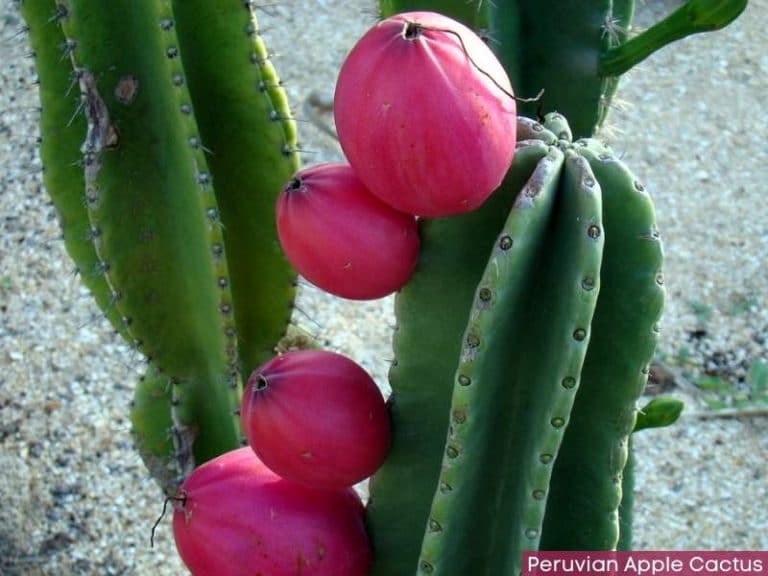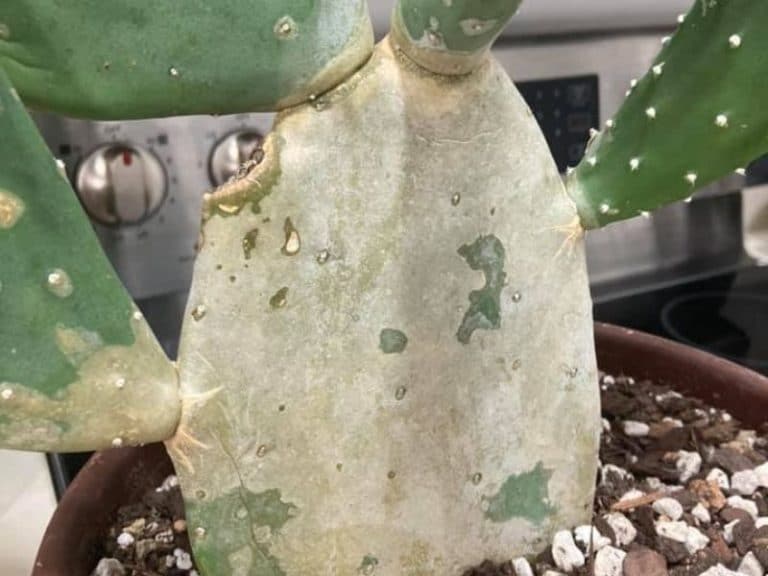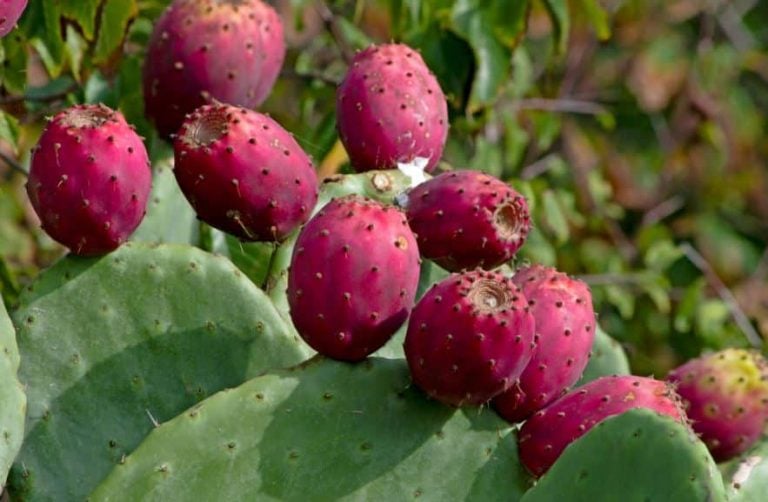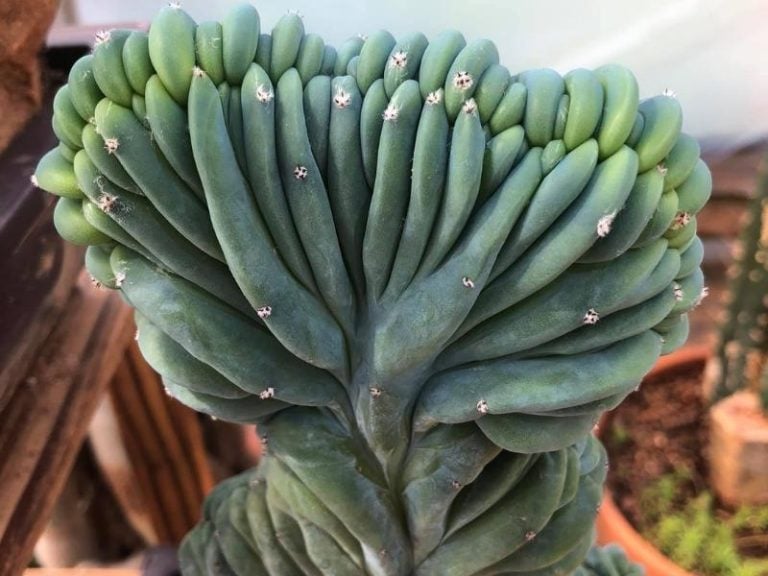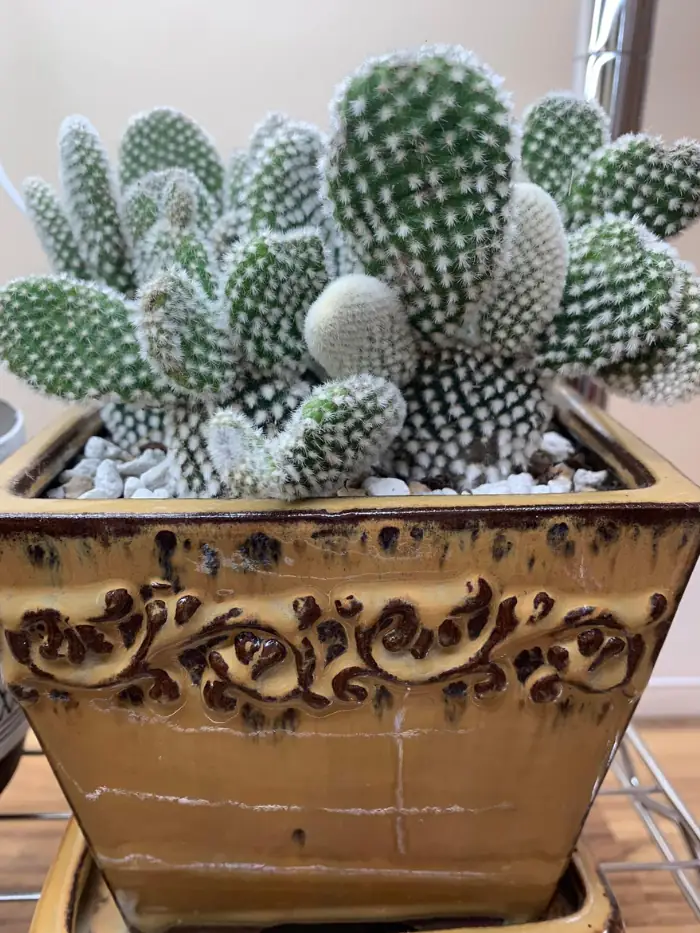Overwatered Cactus – Signs + How to Save the Succulent
Cacti would rather be under-watered than overwatered. Overwatering can cause root rot that can kill the plant if not saved on time. When sitting in soggy soil, succulents tend to suffer from stunted growth, rotting, discoloration, and even rapture. So, how can you save an overwatered cactus?
Remove the cactus from the soggy pot and cut away any roots that appear mushy, black, and decaying. Clean the remaining roots and repot the plant with a new, dry potting mix to save the overwatered cactus. Leave it dry for 2-3 days before watering lightly until the succulent revives.
Note that when overwatered, succulents can show signs of happiness and good health at first – plumping up and showing new growth. Soon after, undesirable signs kick in, the worst being blackening and leaking a sap from raptured pads.
Signs of an overwatered cactus
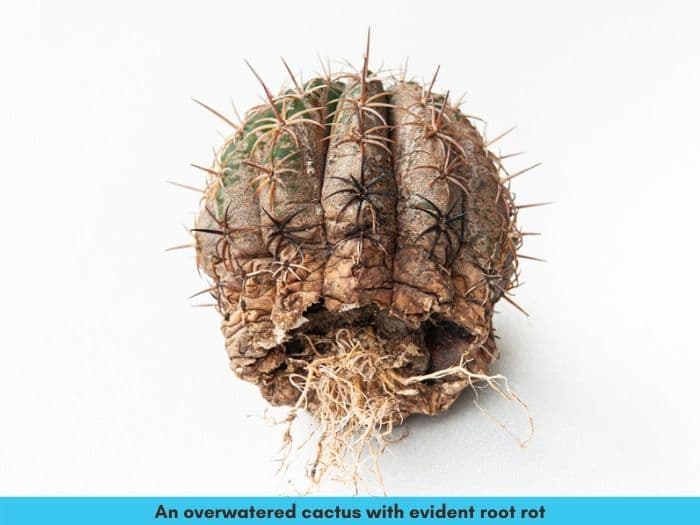
Sometimes, gardeners tend to be too eager to keep their cacti healthy and end up giving them too much water. This negatively affects the plants and puts them at risk of diseases and even pests such as succulent mealybugs.
Here are the signs that your cactus is overwatered:
Splitting
If the skin of some of your cactus pads start splitting, it’s likely that you fed them too much water at once after an extensive period of drought. Cactus plants typically contract as a survival tactic during such long periods of drought.
As such, they prefer gradual reintroduction to watering so that they can expand at their own rate. That’s why applying too much water at one time after an arid stretch causes the cacti to absorb excess water and the skin bursting/splitting as a result.
Spongy and puckered appearance
If your cactus pads have a pulpous appearance and look like they have wrinkles or folds on the skin, you’re either overwatering or underwatering the plant. As the succulent soaks in excess water, it gradually runs out of storage room. Once the plant’s cells- which serve as the water reservoir- reach their capacity, they burst. This is what creates the puckered and mushy look.
Soil that stays wet for too long
Being native to arid and semi-arid regions around the globe, cacti have evolved to quickly absorb soil water before the water disappears due to evaporation triggered by high temperatures. As such, you should expect your cactus plants to absorb as much water as they can within the shortest possible time.
If this is not the case and the soil in which your cactus grows remains wet for too long post-irrigation, it means that you’re overhydrating the plant. Once your succulent is oversaturated, the rate of moisture absorption reduces. Take note that soil that stays wet for extended periods may also cause cactus root rot.
Cactus turning brown or black
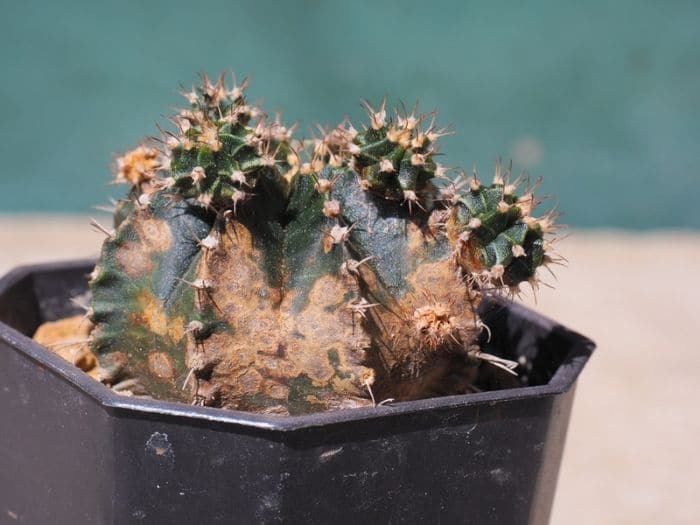
Normal and healthy cactus pads are green in color. Thus, if your cactus plant is spotting shades of brown and black, it’s because you’re overhydrating it.
Discoloration on your cactus pads can occur due to root decay triggered by overwatered soil that stays moist for too long. You can always spot such black and brown spots near the base of the cactus. The discolored spots usually have a pulpous texture and may also be oozing.
To confirm that the black and brown spots on your cactus pads are due to overwatering, you can uproot the succulent to examine its root base for signs of root rot. Dead or blackened roots are a sign of extensive decay caused by overwatering/waterlogged soil.
Cactus dying out during winter
Cactus plants typically go dormant during winter, which means that they need less water during this cold season. Therefore- if your cactus is dying out during this time of the year, it is likely that you’re feeding it too much water at a time when the plant barely needs it.
Can an overwatered succulent be saved?
Yes- even if your cactus plants are already showing visible signs of damage due to over-hydration, they can still be saved. Remember, however, that it’s easier to save a cactus plant that’s at the initial stages of overwatering than one that has been badly overwatered to the point of significant root rot.
Even if the damage is extensive, say, a significant portion of the roots and stems have died due to root rot, you can still save some parts the plant by propagating the few remaining healthy shoots to form new plants. With proper care and maintenance, the cacti should be able to revive again.
How to Save an Overwatered Cactus
Leaving cactus overwatered for a long time can kill the plant as root rot disease starts to spread on the roots. If the succulent is showing signs of overwatering, the best option is to repot it with a new, dry potting mix right away. However, you might want to treat root rot first before doing so.
Here’s how to save an overwatered cactus and revive it:
1. Repot the cactus
After assessing the cactus roots, cut out the decayed roots that are either dead, blackened, or mushy. Let the cactus dry up before repotting it in a dry soil mix. If parts of the stem and leaves of your cactus are showing signs of fungal infection as well, cut them away too prior to repotting.
Never repot the succulent unless you’ve completely removed all the rotten tissue. This is because the decayed parts will spread the disease to the rest of the cactus if rotten tissue is part of the repotted cactus.
After repotting, avoid watering your cactus for at least 3-4 days. After that, you can resume watering- albeit infrequently- and your cactus will regain its healthy state in due time.
2. Reroot the cactus
In instances where root rot damage is extensive and has spread to several parts of the cactus pads, rerooting is the best option you have for saving your cactus.
Cut away the decayed portions of the roots and tissue and then propagate the remaining portion of the cactus by burying it about one-inch deep inside a cactus soil mix.
Note that if you only managed to save only a very small section of the cactus for propagation, you’ll want to bury it only about half as deep. Meanwhile, avoid watering the propagated cactus for the first seven days, after which you can switch to an occasional watering schedule.
3. Improve drainage in the pot
If the overwatering is due to factors out of your control, such as daily rainfall, you can save your cacti from having to soak in too much water by facilitating better soil drainage. You can achieve improved drainage by planting your cacti in a commercial cactus soil mix. Such soil mixes are typically loose enough to facilitate fat and complete water drainage.
If you’re working on a budget, you can make your own cactus soil mix. Some of the materials you can use to create a well-draining substrate for your cactus include sand, soil, pebbles, peat, and pumice. At the same time, you should consider growing your cactus plants in clay pots, as clay helps to drain water faster from the root zone.
4. Water once every 7-10 days
Watering your succulents only when necessary is perhaps the most important strategy for saving cactus plants that have been affected by overwatering.
Proper cactus irrigation entails watering the soil once the top two inches of the soil goes completely dry. For smaller cactus species whose roots aren’t as extensive, we recommend watering only after the top one-inch of the soil dries up.
Generally, you should water your cacti at least once every ten days. However, depending on the temperature in your region, the top layer of the soil mix can dry up faster or slower than expected. Therefore, as a rule of thumb, you should always let the potting soil mix completely dry up before watering again.
You can assess the moisture levels in the soil mix by inserting a finger into it to feel for wetness- or lack thereof. If your finger feels dry and there’s lots of resistance as you insert it, then you can proceed to hydrate the cactus again.
Conversely, if your finger feels wet and easily penetrates through the moist substrate, it would be best to wait a couple more days before testing the soil again.
CONTINUE READING: How to Grow Peruvian Apple (Cereus repandus)


